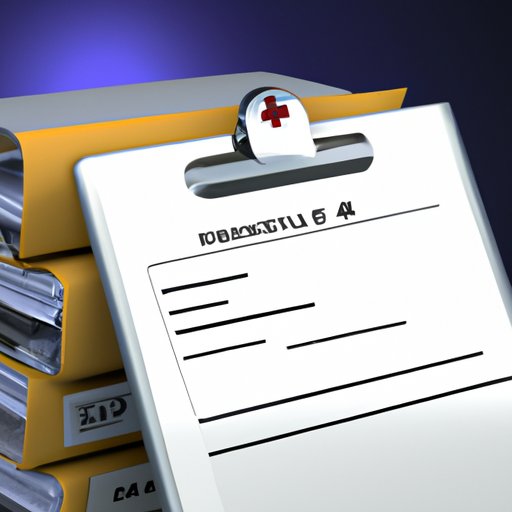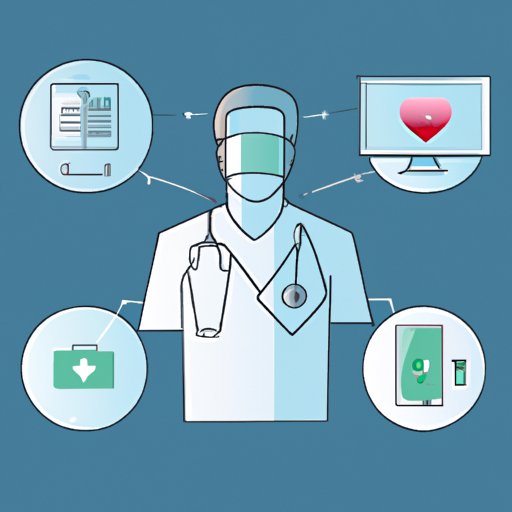Introduction
Technology has become increasingly integrated into our lives over the past few decades, and its impact on the health care industry has been significant. From improved diagnostic capabilities and streamlined communication between health care providers to reduced patient waiting times and enhanced treatment options, technology has revolutionized the way health care is delivered. In this article, we’ll explore how technology has improved health care, as well as the challenges and opportunities that remain.

Increased Access to Medical Records
One of the most significant changes that technology has brought to health care is the ability to store and access medical records electronically. According to a report by the Agency for Healthcare Research and Quality, “The widespread adoption of electronic health records (EHRs) can improve the quality, safety, and efficiency of health care.”
Benefits of Electronic Medical Records
Electronic medical records have numerous benefits, including improved accuracy and accessibility. With electronic records, doctors no longer need to rely on paper records or outdated filing systems, which can be time-consuming and prone to error. Electronic records are also easier to share between providers, ensuring that all relevant medical information is available to everyone involved in a patient’s care. This can lead to better diagnosis and treatment decisions.
Challenges and Solutions
The transition to electronic medical records has not been without its challenges. For example, some providers may be reluctant to adopt new technologies, or may find the cost of implementation prohibitive. To address these issues, the government has implemented initiatives such as the Meaningful Use Program, which provides financial incentives to health care providers who demonstrate meaningful use of electronic health records.
Improved Diagnostic Capabilities
Advances in technology have also enabled health care providers to make more accurate diagnoses. For example, artificial intelligence (AI) can be used to interpret complex data sets, such as MRI scans, more quickly and accurately than humans. AI can also be used to detect subtle patterns in a patient’s medical history that may indicate a potential health issue.
Use of Artificial Intelligence
AI-based systems can be used to interpret large amounts of medical data, allowing for faster and more accurate diagnoses. According to a study published in the journal Nature, “AI-enabled medical imaging systems can reduce the time needed to interpret medical images from hours to minutes, enabling clinicians to make more informed diagnoses and treatment decisions.”
Use of Wearable Technologies
Wearable technologies, such as fitness trackers and smartwatches, are also being used to monitor patients’ health. These devices can track vital signs such as heart rate, respiration rate, and temperature, providing doctors with real-time data that can be used to monitor a patient’s condition and provide early warnings of potential health issues.
Streamlined Communication Between Health Care Providers
Technology has also improved communication between health care providers. Digital platforms, such as telemedicine software and secure messaging systems, allow doctors and other health care professionals to exchange information quickly and securely.
Use of Digital Platforms
Digital platforms enable health care providers to share patient information, discuss treatment options, and collaborate on cases in real time. According to a study published in the Journal of the American Medical Association, “The use of digital platforms for communication among health care professionals can facilitate timely access to care, streamline workflow processes, and improve patient outcomes.”
Benefits of Improved Communication
Improved communication between health care providers can lead to better coordination of care and improved patient outcomes. It can also reduce errors, as doctors can quickly share information about a patient’s condition or treatment plan with other members of the team.
Enhanced Treatment Options
Technology has also opened up new treatment options for patients. For example, telemedicine enables patients to receive medical care remotely, while robotics and automation have made certain procedures less invasive and more efficient.
Use of Telemedicine
Telemedicine enables patients to receive medical care without having to travel to a doctor’s office. According to a study published in the British Medical Journal, “Telemedicine can provide an effective alternative to in-person visits for patients, particularly those in rural areas or those with limited access to care.”
Use of Robotics and Automation
Robotics and automation have also enabled doctors to perform certain procedures with greater precision and accuracy. For example, robotic-assisted surgery can reduce the risk of complications and allow for faster recovery times, while automated drug delivery systems can ensure that patients receive the correct dosage of medication.
Reduced Patient Waiting Times
Technology has also enabled health care providers to reduce patient waiting times. Automated appointment scheduling systems, for example, can help reduce wait times by ensuring that patients are seen in a timely manner.
Use of Automated Appointments
Automated appointment scheduling systems can help reduce wait times by ensuring that patients are seen in a timely manner. According to a study published in the Journal of the American Medical Association, “The use of automated appointment scheduling systems can significantly reduce patient wait times and improve patient satisfaction.”
Benefits of Reduced Wait Times
Reducing patient wait times can lead to improved patient outcomes. When patients are seen in a timely manner, they are more likely to get the care they need and less likely to experience complications due to delayed treatment.
Improved Remote and At-Home Care
Technology has also enabled health care providers to deliver better remote and at-home care. Telehealth services, for example, allow patients to receive medical advice and treatment without leaving their homes, while remote monitoring systems enable doctors to monitor a patient’s condition from a distance.
Use of Telehealth Services
Telehealth services allow patients to connect with doctors remotely via video or phone. According to a study published in the Annals of Internal Medicine, “Telehealth services can improve access to care for patients in rural and underserved areas, as well as those with mobility issues or other barriers to care.”
Benefits of Improved Remote Care
Improved remote care can lead to better health outcomes for patients. For example, remote monitoring systems can enable doctors to keep track of a patient’s condition without the need for frequent office visits, while telemedicine can provide timely access to care for those in rural or underserved areas.
Conclusion
Technology has revolutionized the way health care is delivered, from increased access to medical records to improved remote and at-home care. The benefits of technology in health care include improved diagnostic capabilities, streamlined communication between health care providers, enhanced treatment options, and reduced patient waiting times. Going forward, further improvements in technology are likely to continue to improve the delivery of health care.
(Note: Is this article not meeting your expectations? Do you have knowledge or insights to share? Unlock new opportunities and expand your reach by joining our authors team. Click Registration to join us and share your expertise with our readers.)
